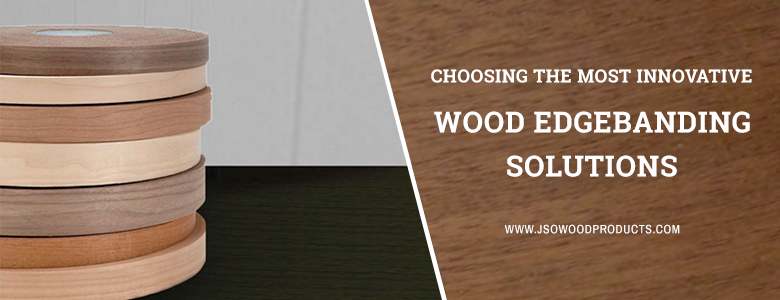Wood Edgebanding
Choosing the Most Innovative Wood Edgebanding Solutions
Edge banding is the process of covering the sharp edges of wooden panels with thin strips to avoid humidity, liquid spills, and improve appearance. While edge banding resolves the most common problem that we face with wooden furniture, there are many solutions to edge banding such raw edges. Raw edges of wooden furniture are not only dangerous but may also appear unpleasant, making the furniture look unattractive.
ABS is very similar to PVC edge banding, apart from differences in density, composition and amount of chlorine present, which gives ABS flame-resistant characteristics.
Laser edge banding is one of the most innovative forms of edge banding solutions that is popular for its completely functional and adhesive nature. Also, the fact that laser edge banding gives edges an invisible and finished look along with thermal and moisture resistance properties that keep wooden panels and furniture safe and of great quality.
PP or Polypropylene serves as an alternative solution to PVC and ABS edge banding and is mostly used in the packaging industry due to similar functional characteristics and chlorine-free nature.
Wood veneer edge banding makes use of thin pieces of wood or veneer that are finger-rolled together to cover sharp edges of wood panels.
Edge banding can be done in any of the following forms
PVC is the most common form of edge banding known for its durability, feasibility, and longevity.ABS is very similar to PVC edge banding, apart from differences in density, composition and amount of chlorine present, which gives ABS flame-resistant characteristics.
Laser edge banding is one of the most innovative forms of edge banding solutions that is popular for its completely functional and adhesive nature. Also, the fact that laser edge banding gives edges an invisible and finished look along with thermal and moisture resistance properties that keep wooden panels and furniture safe and of great quality.
PP or Polypropylene serves as an alternative solution to PVC and ABS edge banding and is mostly used in the packaging industry due to similar functional characteristics and chlorine-free nature.
Wood veneer edge banding makes use of thin pieces of wood or veneer that are finger-rolled together to cover sharp edges of wood panels.
Solutions to do edgebanding yourself:
While the above are some of the best solutions provided by edge banding manufacturers and providers, there are a few things that you can do to for edge banding yourself.- You can get an edge banding for your wooden furniture and cut it into thin slices to get started with wooden edges. Make sure that the edge banding is cut at least an inch more than required.
- With the help of a clothes iron, heat the edge banding from above onto the edges of the wooden panel or furniture very carefully. In some cases, you may also need to apply more pressure for the edge banding’s adhesive to expand and precisely stick over onto the edges.
- The ends or extra edges of the binding can be easily trimmed using a workbench and chisel to strike the edges thereafter. If you are not comfortable trimming the ends yourself, end-chopping tools can be bought to trim the edges of the slices neatly.
- Additionally, to ensure a neat and thorough end-trimming of the edge banding, a flush-trimming tool can be used against the face of the wooden panel. When using a flush-trimming tool, the same must be placed and used in the direction of the wood grains to get a neatly sliced edge, and will also help avoid any tears during the process. A flush-cutting router and sharp chisel are other inexpensive end-trimming tools that can help you trim the edges with great precision and less effort.
- Once the edges have been trimmed, the panel can be finished up by using some sand to even out the surface of the edges. Block panes and sandpapers can also be used to do the same; along with veneer edge banding that provides a stained/dyed look to the edges.
